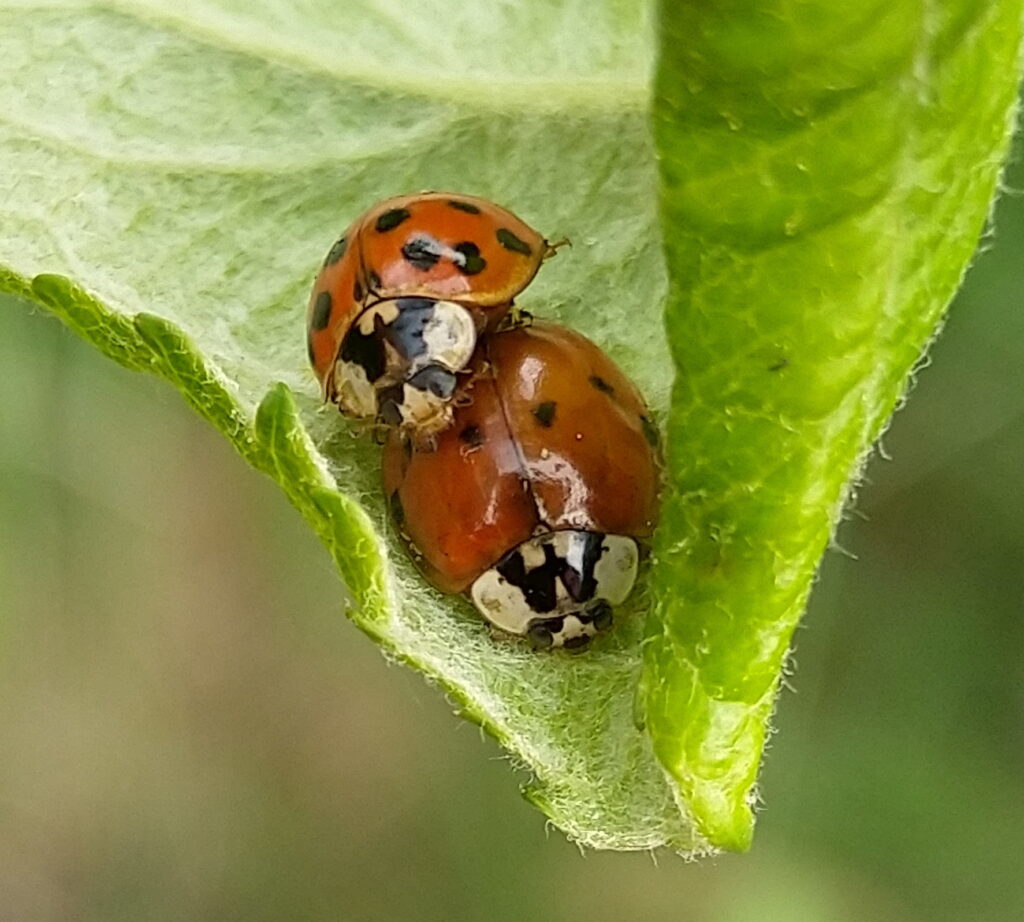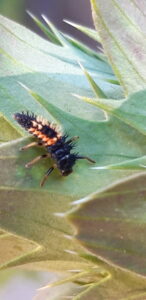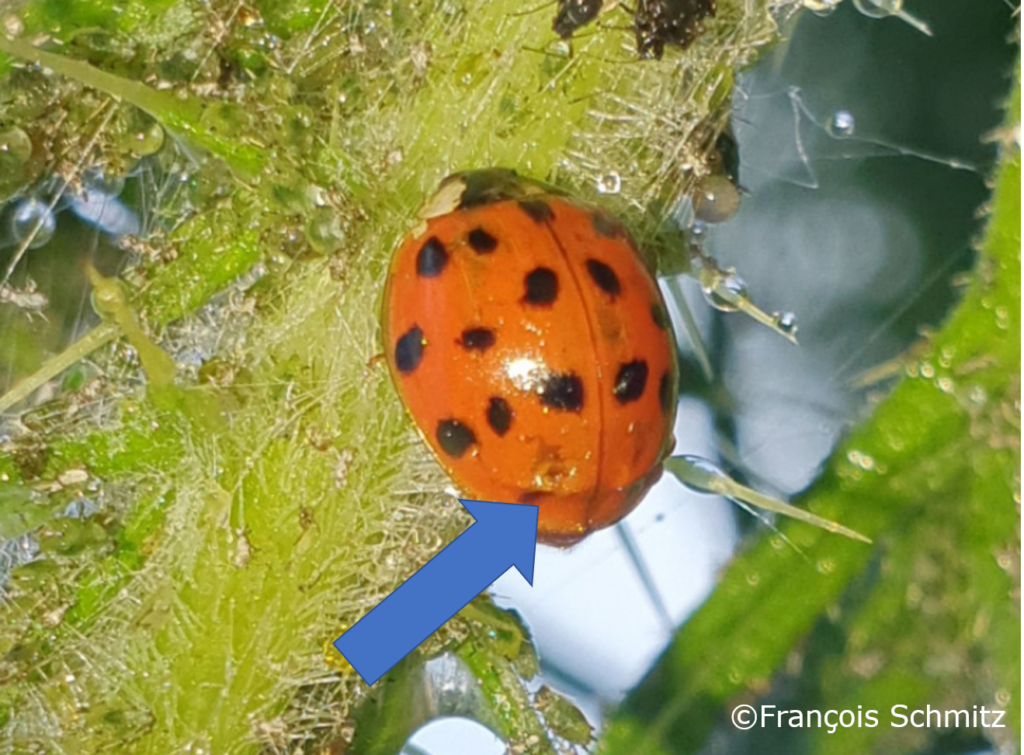The Asian lady beetle
Harmonia axyridis

“Species In The Spotlight” by Tim Adriaens, biologist and father of three. Naturalist at heart with a broad interest in all kinds of species and a love for citizen science and open data.
Why do you want to put this species in the spotlight?
The Asian lady beetle is a non-native invasive species that has become the dominant species in the ladybird communities in no time. It is a notorious invasive species and has become the symbol for careful management of alien species introductions. The Asian lady beetle is a generalist and eats aphids, scale insects, plant lice; and larvae and eggs from other species of ladybirds. It occurs without a doubt in every Flemish garden, as gardens and parks are its preferred habitat. Its swarming behavior in autumn (second week of October) is striking, when the adult beetles flock en masse and are attracted to houses and walls where they try to enter.
Where does this species hide?
On all kinds of trees, shrubs and herbs, in the fall and winter also indoors. Also frequently found on the moth boxes. Roses and nettles, tilia, hawthorn, oak, willow, birch, etc. are popular host plants on which the adult beetles and larvae find their food. Pollen provides sugars, aphids provide protein and are necessary for the growth of the larvae.
How can you recognize the species?
The color and spots are variable, but the Asian lady beetle is big (as big as 7-spot ladybird), always has a dent in the back (like the 10-spot ladybird but the latter species is larger) and the most helpful feature is the black belly core with orange edge (all other large species have an even black belly).
















